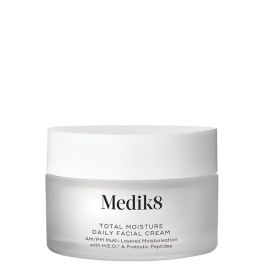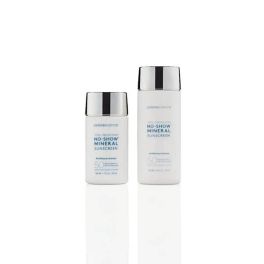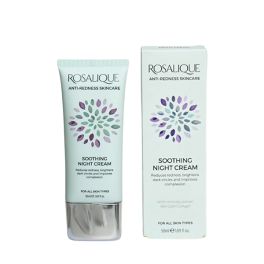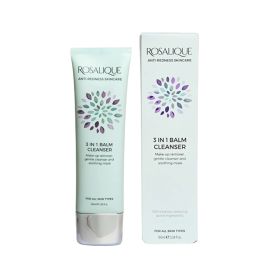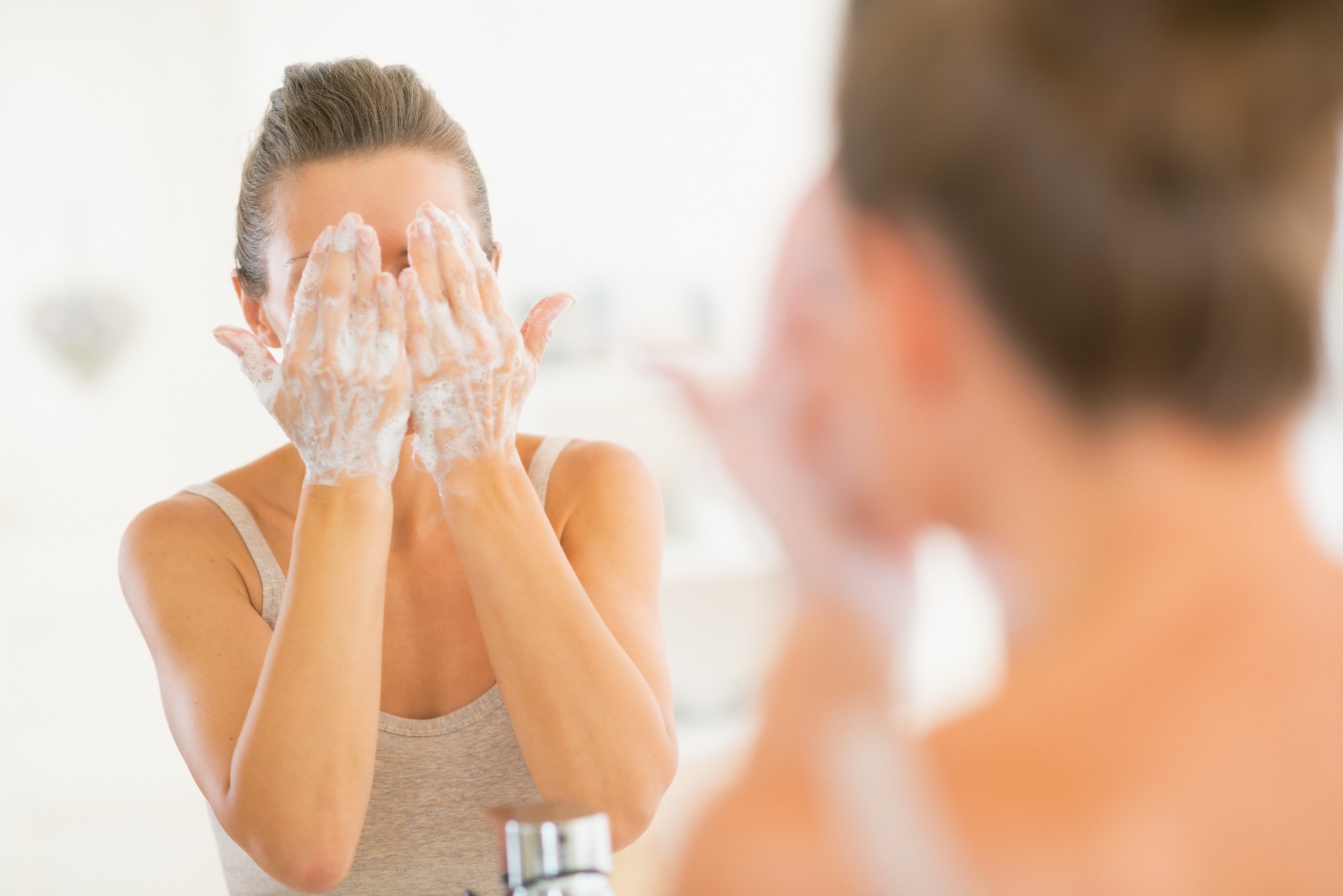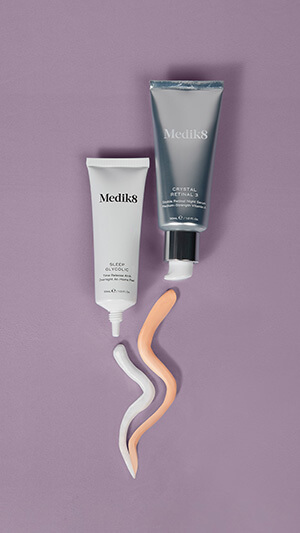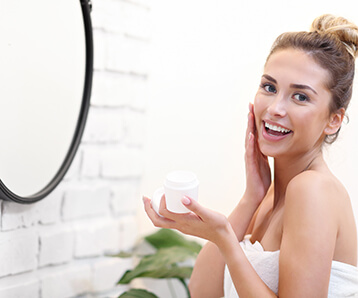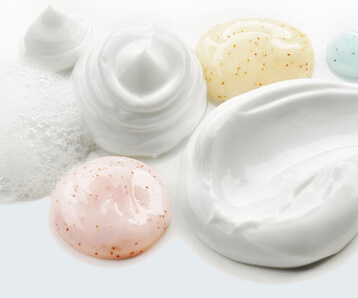A Beginner's Guide To Skincare Ingredients: Glycolic Acid Posted on 18 Mar 2024
Various names of key skincare ingredients are spoken about nowadays as if we should know what they mean but it's easy to feel confused if we don't. What do all the different acids actually do? What is the difference between lactic acid and glycolic acid? Is hyaluronic acid exfoliating?
Using a chemical exfoliant can seem scary at first, especially when you have more sensitive skin but, it shouldn't be. Chemical exfoliants are essential for healthy skin, are extremely easy to use, and are actually a lot more gentle on the skin compared to manual exfoliation.
It's very simple to incorporate glycolic acid into your skincare routine and almost everybody can use it. This blog will answer the question of "what is glycolic acid?" amongst many others plus discuss its benefits for the skin.
What Is Glycolic Acid?
Glycolic acid is amongst the well-known alpha hydroxy acids (AHA) family. It is naturally derived from sugar cane however, you will often find that it is now synthetically made in most modern glycolic acid products. Glycolic acid has the smallest of molecules out of the rest of the AHA family meaning that it can pass through the skin barrier easily, penetrate deeper into skin cells, and provide superior results.
Glycolic acid helps to shed dead skin to reveal healthy skin underneath, increases collagen production, and keeps skin hydrated as the exfoliation process means skin absorbs other skincare products a lot easier.
Glycolic acid is joined within the alpha hydroxy acid (AHA) family with the likes of lactic acid, mandelic acid, and citric acid.
How Does Glycolic Acid Work?
Most people are familiar with physical exfoliation within their skin care routine, the grainy scrubs that you manually use on dry skin to buff away dead skin cells on the skin's surface.
Glycolic acid, on the other hand, is a chemical exfoliant that requires no aggressive scrubbing at all. Despite the name, chemical exfoliation is a lot more gentle on the skin than physical exfoliation.
Glycolic acid works by applying the product onto the skin and leaving it to work for a few minutes. Think of the small molecules as teeny tiny PCA-MAN... The teeny tiny PAC-MAN gradually eats away at the outer layer of the skin's surface, dissolving dead skin cells and loosening the glue that holds the tightly packed layers of skin cells together to then encourage cell turnover, shed dead skin cells, and reveal fresh, radiant skin.
Who Is Glycolic Acid Best For?
Glycolic acid products are ideal for all skin types. It is ideal for those with an uneven skin texture, dull skin tone, pigmentation, fine lines, and wrinkles.
If you have very sensitive skin or experience mild irritation when you use traditional glycolic acid, glycolic acid toners tend to have a much lower % concentration meaning that they are easier to tolerate. We recommend SkinCeuticals Equalizing Toner.
Alternatively, we would instead recommend lactic acid if all else fails. This is because the molecules in lactic acid are larger and cannot penetrate the skin as deeply.
Can Anyone Use Glycolic Acid?
Yes, anyone can use glycolic acid however, there may be another ingredient that is better suited to your skin and skin concern(s).
For example, if you have oily skin, clogged pores, cystic acne, or acne-prone skin then we would suggest that salicylic acid (a beta hydroxy acid or BHA) would benefit you better. However, if you find salicylic acid to be too drying or causes skin irritation on your skin then, glycolic acid is still very effective too.
Glycolic acid increases the skin's sensitivity so, all users must wear a high-protection sun factor when experiencing sun exposure to prevent sun damage.
How Long Does It Take For Glycolic Acid To Work?
It can vary. Some products will give you results almost instantly or overnight however, most products will take a few uses to really see the true results.
-
After about a month, you should notice clearer skin as glycolic acid works to keep skin clean and decongested.
-
Two months in, you should see that dark spots and pigmentation is reduced as the regular glycolic acid application is melting away old, dead skin cells and increasing cell turnover. You may even notice a reduction in scars.
-
At around three to six months, your boosted collagen production means that fine lines and wrinkles start to reduce. The skin will feel significantly firmer and more elastic.
Something that can provide a more potent % of glycolic acid, such as a face mask or overnight chemical peel, will most likely give you results as soon as you wash the product off!
Will Glycolic Acid Make Makeup Go On Better?
Yes! Makeup will glide onto your skin like butter after using glycolic acid products as all surface dead skin cells have been removed to leave only fresh skin. Regular glycolic acid use is a must for all professional makeup artists.
Is Using Glycolic Acid At Home The Same As A Glycolic Acid Peel?
No, but using glycolic acid at home in between your clinic chemical peels is greatly recommended and amazing to maintain your results for longer and in between treatments. A chemical peel tends to have a much higher % concentration and therefore must only be performed by a professional aesthetician who is highly trained.
How Often Should I Use Glycolic Acid?
This depends on the individual product and your skin type. Products such as a glycolic acid cleanser can be used daily however, something like at-home glycolic acid peels should be kept to twice a week maximum. If your skin tolerates the glycolic acid product well, great. If you find that you are experiencing mild irritation then it is advised to lessen or cease use.
Can Glycolic Acid Be Used By Darker Skin Tones?
Yes, but those with darker skin tones must use glycolic acid safely. Glycolic acid is brilliant at improving skin texture but overuse can stimulate melanocytes (these are the melanin-producing cells in your skin's deepest layer) and cause hyperpigmentation.
The best advice is to add glycolic acid in low % concentrations and see how the skin reacts.
Can I Mix Glycolic Acid With Other Products?
Yes. However, it also depends on the individual product.
Medik8 state that their Sleep Glycolic Overnight Peel can safely be used alongside their Crystal Retinal range but usually, it's not advised to use glycolic acid and over-the-counter retinol in the same skincare routine (you can use one in the AM and one in the PM or alternate nights instead).
In the past, it has been advised to use vitamin C and glycolic acid separately but using them in the same routine can actually have a hugely positive effect on the skin in promoting a more even skin tone, reducing dark spots, and lighten hyperpigmentation.
Rules differ from product to product; ingredients such as benzoyl peroxide should definitely be avoided. The majority of skincare ingredients can be used alongside glycolic acid but the key is to check individual products. You can always contact our professional skincare advisors for confirmation.
SHOP GLYCOLIC ACID:
GLYCOLIC ACID TARGET TREATMENTS
SHOP ALL GLYCOLIC ACIDS PRODUCTS













